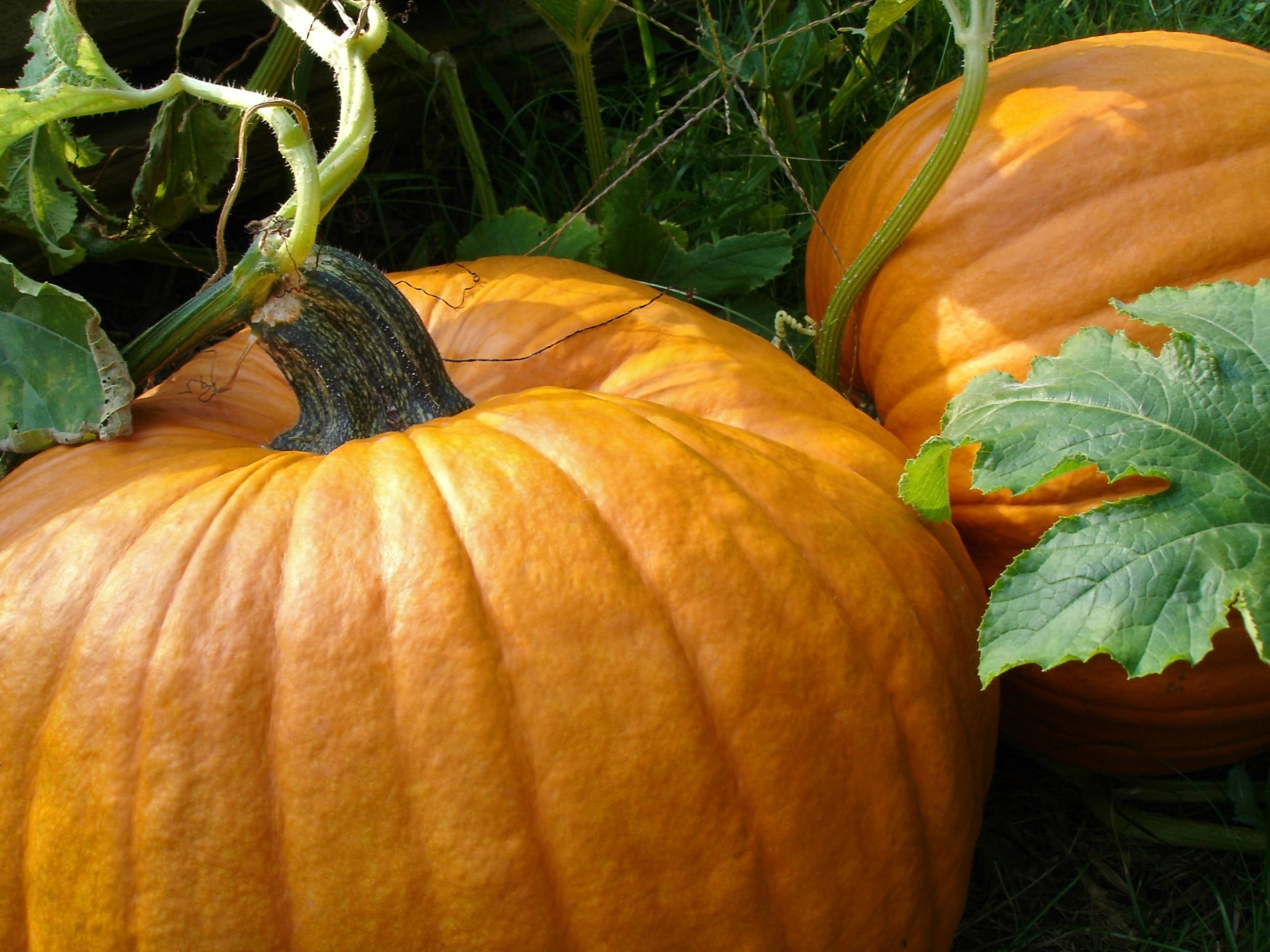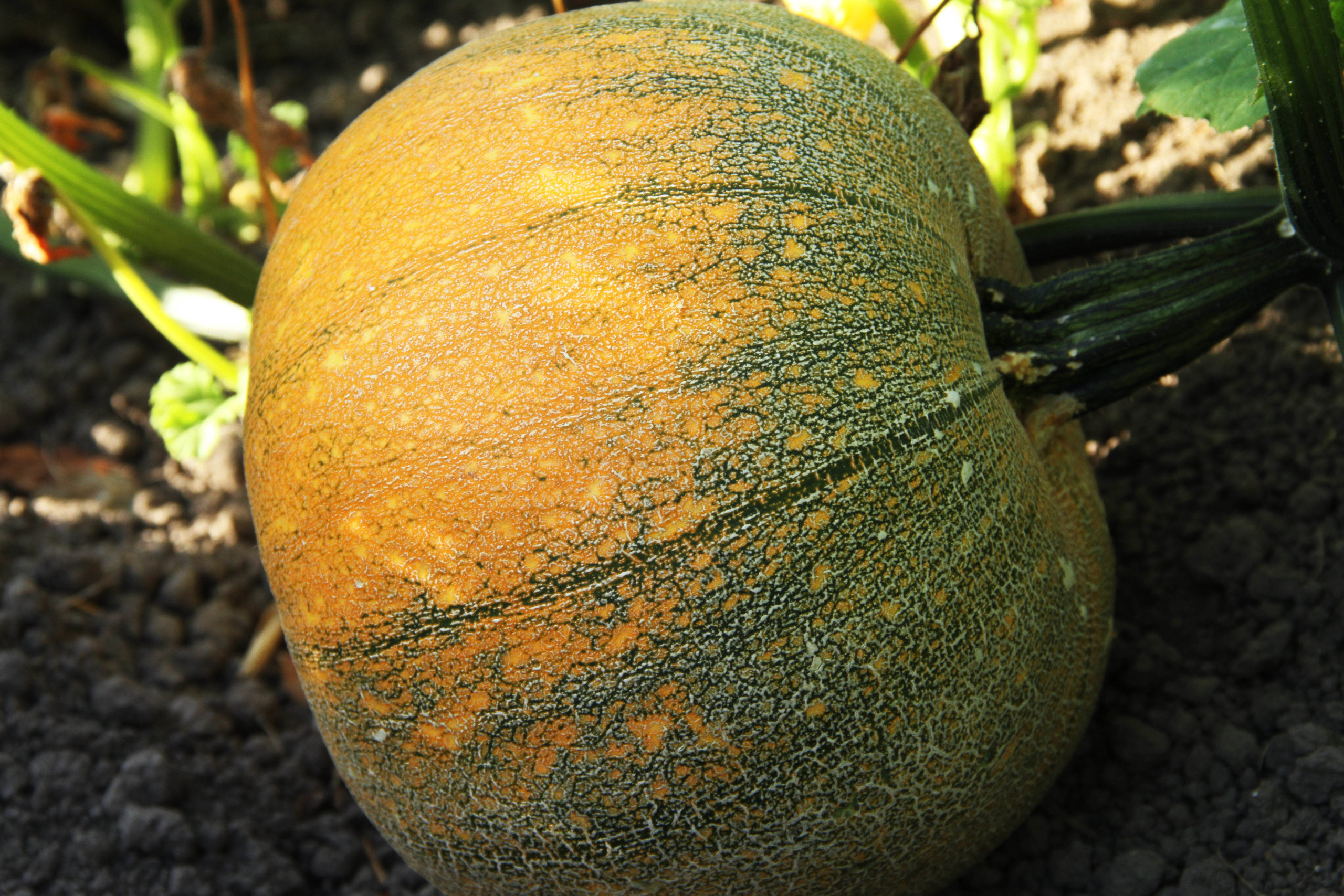10 Tips for a Successful Pumpkin Harvest

GardenZeus receives commissions for purchases made through links in this post. There is no additional cost to you.
Nothing says fall quite like pumpkins, a dream of autumn and Thanksgiving captured in vegetable form.
Gardeners who have planted pumpkins can make the most of their pumpkin harvest with these few simple tips:
- To improve uniform appearance of pumpkin fruits, try rotating the fruits every week or two as they grow. Pumpkin fruits are usually more richly pigmented and darker in color where exposed to sunlight. Exposing all sides of the fruits to the sun will help them to develop uniform color. Too much direct sunlight may damage pumpkin fruits. Rotating pumpkin fruits may help to prevent sunscald. An hour or two per day in the sun may be sufficient to bring the fruits to full color.
Squash and pumpkin fruits are particularly subject to sunscald late in the season when plants have died back and leaves no longer shade fruits.
- Pumpkins resting directly on soil may be prone to rot. Mound mulch under pumpkin fruits or elevate them on a dry surface such as a wooden board, especially from the time they begin to color until maturity.
- Attentive gardeners may improve their pumpkin harvest by removing blooms and new fruits that appear late in the growing season, and which may not reach maturity before the plant is exhausted. This will help to encourage growth and quality of existing fruits.
- Length of growing season varies widely among varieties of pumpkin. The “days to maturity” from seed packets gives a basic guideline but is not always accurate due to variations in weather and growing conditions.
- Pumpkins are often left unharvested until the end of a long growing season when plants have died back. Different varieties may have unique clues or signs that fruits are mature. Most varieties are ready for harvest when fruits are in full color, rinds are firm, and the nearby vines and stem to a fruit have shriveled or died. Plant leaves and stems may generally be turning brown and dying.
- Many varieties are ready for harvest when the rind has become so hard that it can’t be easily nicked or dented with a fingernail. Shorter-season <i>Cucurbita pepo</i> varieties, particularly those grown for immediate cooking, may be ready to harvest when rinds are still somewhat soft.
- Many pumpkin varieties can be picked early and eaten like summer squash but won’t be as sweet or flavorful as after full maturity and curing.
- Be patient and wait until full maturity to harvest pumpkins. Fruits will not continue to mature or harden if harvested early, and immature fruits will not last well in storage.
- Use a knife or pruning shears to cut pumpkins from the vine. For large fruits or thick stems, use loppers or a pruning saw. Leave 3 to 6 inches of stem above the fruit, and avoid using the stem stub as a handle for lifting or moving a pumpkin. A sufficient stem stub slows and reduces microbial infection coming in through the stem and will result in a longer storage period for the pumpkin.
- Many pumpkin varieties are cured after harvesting. Curing reduces water in pumpkin fruits and hardens their skins, preparing them to last as long as possible in storage. Curing also tends to increase sweetness of pumpkins because it reduces their water content in proportion to sugars. Ideally, cure unwashed pumpkin fruits outdoors in sunlight at warm temperatures (ideally about 80° to 85°F) for about 7 to 14 days. Keep pumpkin fruits dry while curing, and place fruits in part shade to avoid sunscald, particularly during warm-to-hot weather. They can be cured indoors in a well-ventilated area if weather is cool or rainy, or if curing fruits may be subject to wet soil, sprinklers, or other irrigation.
GardenZeus has customized information to help you grow both edibles and ornamentals by plant and zip code. To receive customized growing information for your area, click here.
Other articles of interest:
Fall and Winter California Gardening Part 1: Introduction
Fall and Winter California Gardening Part 2: Benefits and Challenges
New to growing edibles? Did you know that you can grow tomatoes year around in many areas of California? See Growing Winter Tomatoes in Mild California Areas.
Did you know that in California, fall is the best time for planting? Do you know how to choose the best seeds? See How to Choose the Best Seeds for California Gardens
GardenZeus recommends seeds from Botanical Interests, a seed supplier in the western United States that has an excellent supply of seeds for fall planting.

